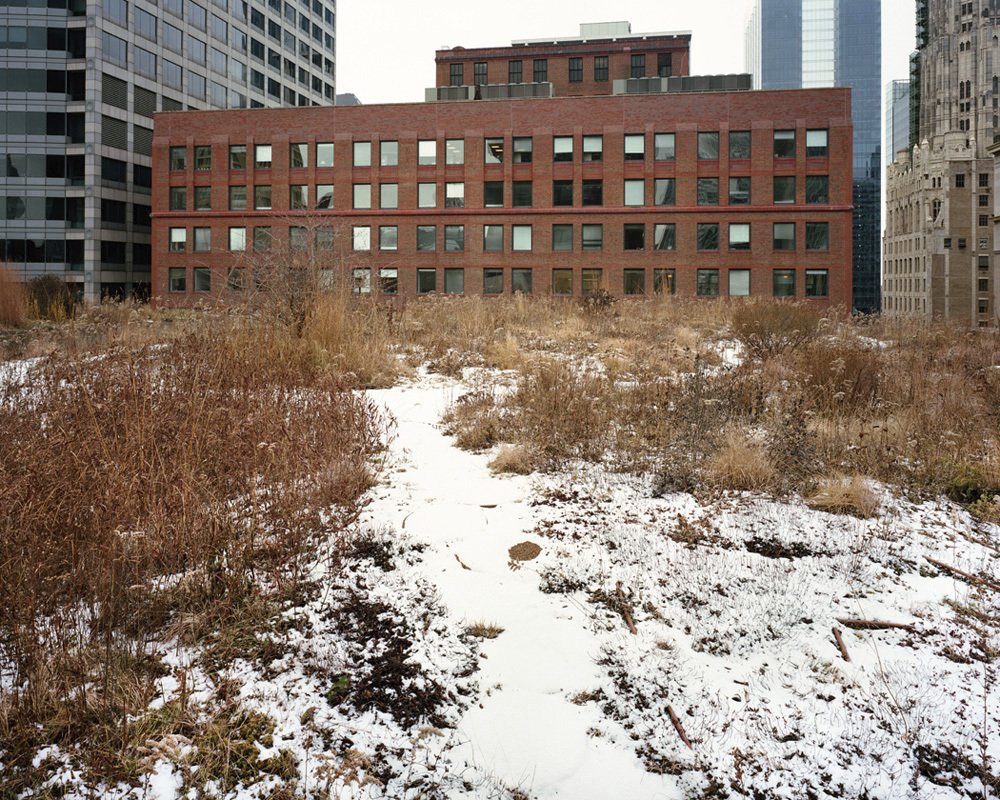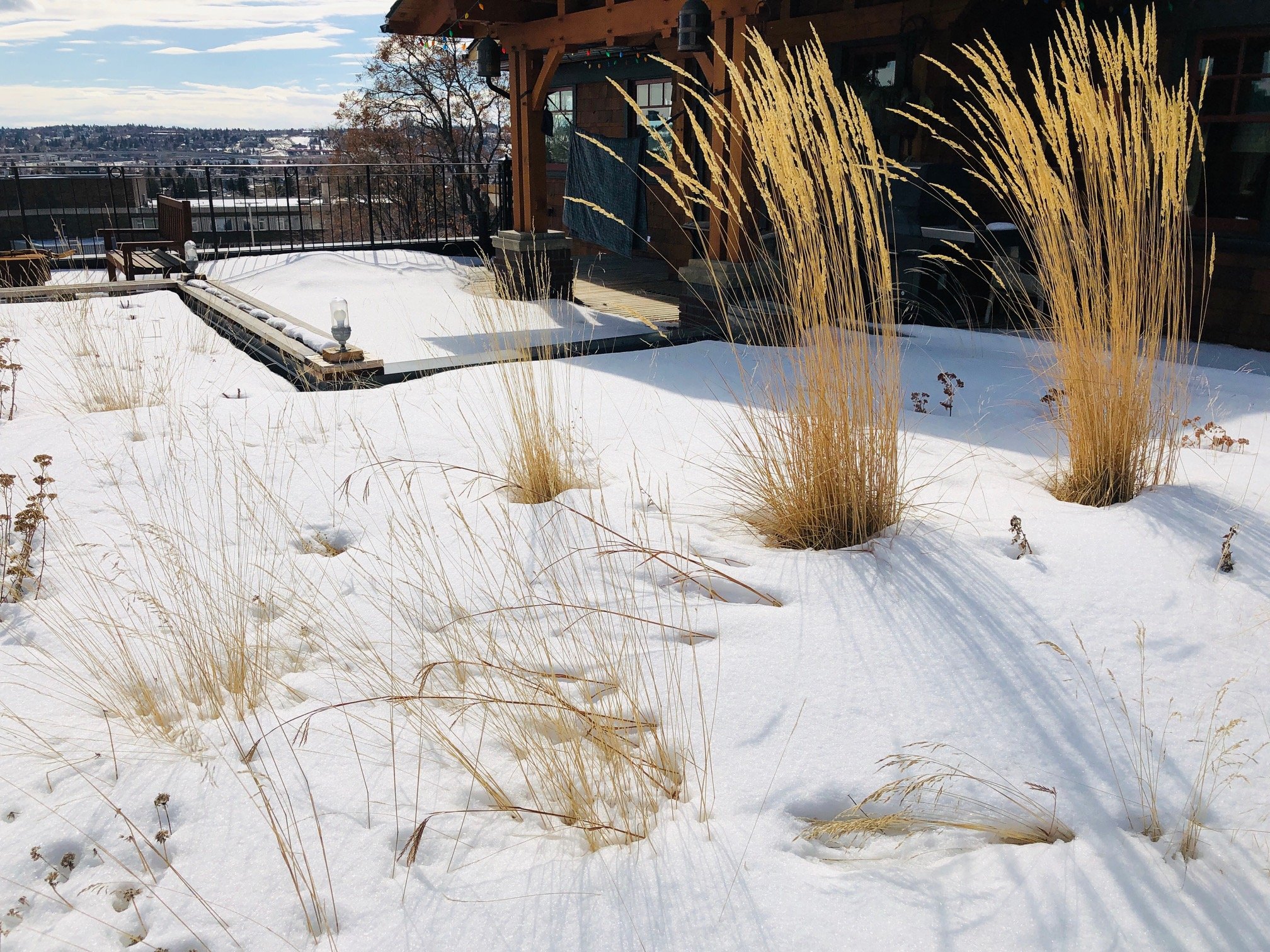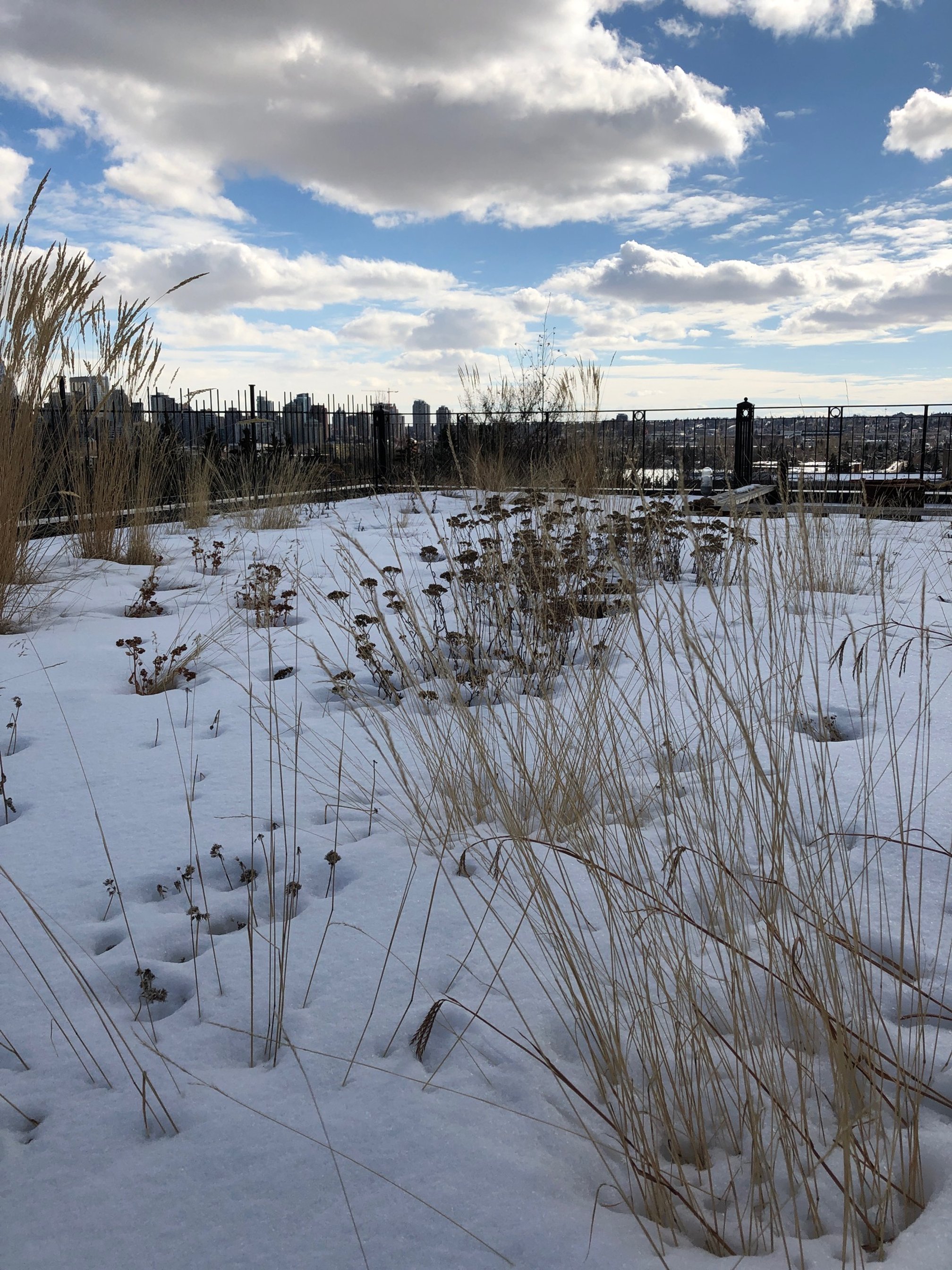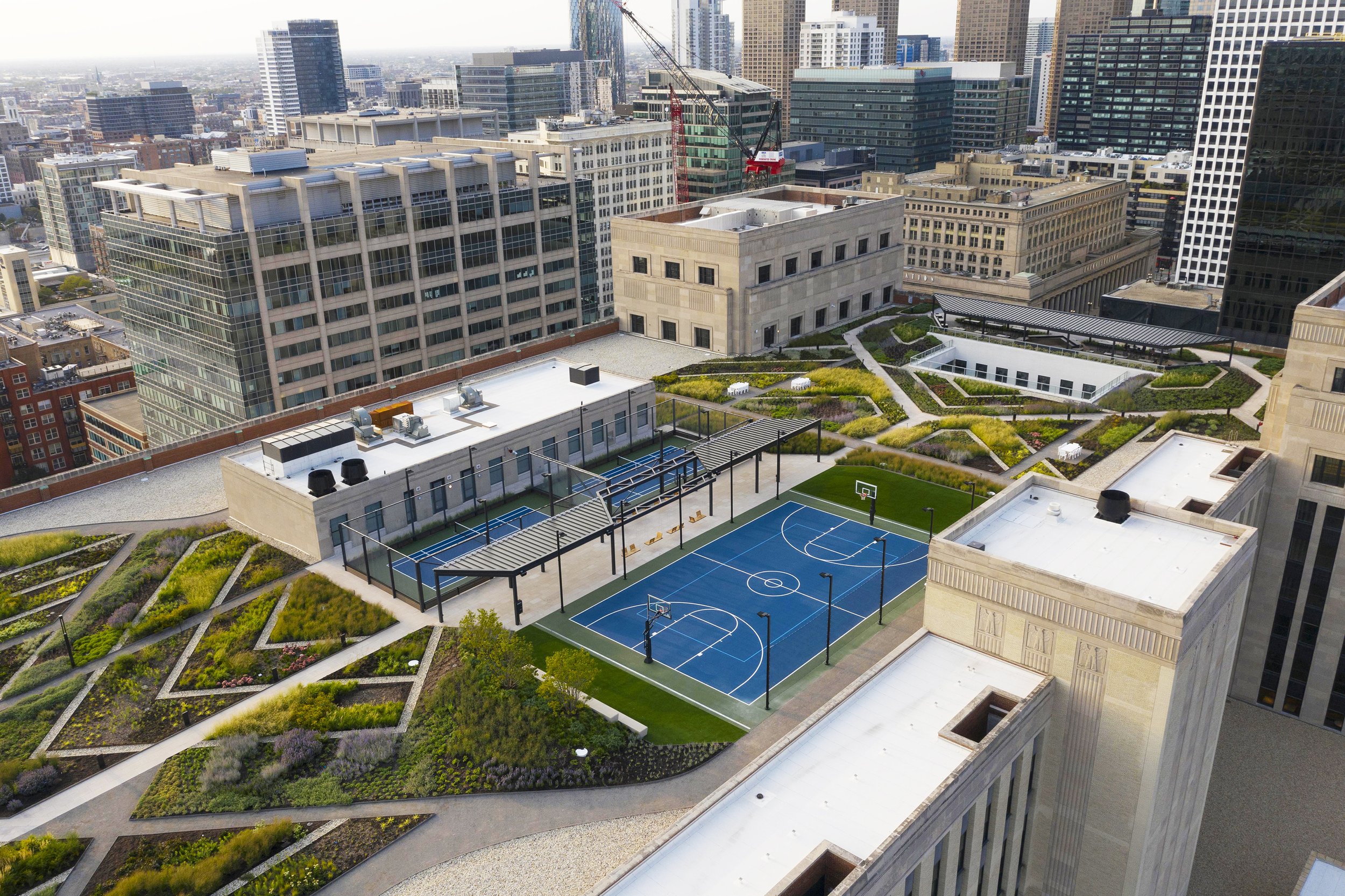Helping Green Roofs Survive the Winter Months
Advertisement
Chicago City Hall’s iconic green roof in the winter. Photo: Brad Temkin, courtesy McDonough + Partners
Across North America, there are a litany of examples showing how climate change is disturbing weather patterns. Our understanding of the traditional changing of the seasons is shifting. We’ve seen heat domes, raging wildfires, intense flooding and rainfall, harsh drought, explosive tornadoes and other extreme weather events increase in frequency and duration over the last few years, as the planetary climate overall warms. Unfortunately, that comes with an increase in the public cost burden to fix damaged infrastructure and stresses flora and fauna.
Winter is the traditional dormant season for plants and it is also seeing changes: winter is becoming more unpredictable. As the planet heats up, people and plants are having to adapt in unexpected ways. One way is to adapt the design and maintenance of green roofs and the plants that inhabit them.
Calgary, Alberta, on the western edge of the Prairies, close to the Rocky Mountains, is a Canadian city well known for its cold winters. Kerry Ross is an architect and award-winning green roof designer there. Over the past 20 years or so, she has seen some substantial changes in her practice especially for green roofs in the winter.
Calgary, like other locations, is seeing an increase in extreme weather events including hotter, drier summers and wetter winters. More precipitation is falling in the winter and spring which makes choosing appropriate plants for green roofs a particular challenge, as summers are drier than normal. In response, the Calgary region has officially been moved from a Zone 3 to a Zone 4 hardiness zone for plants within the last 20 years. This makes plant selection more challenging, but it also improves survivability.
Advertisement
Frost on rooftop sedum. Photo: Kerry Ross
During the winter, plants naturally go into a dormancy phase. The term “putting the garden to bed” comes from the recognition that plants “go to sleep” in the winter. When it’s too cold, too dry or there isn’t enough sunlight to grow, plants focus on protecting their root systems. For most plants, the dormant season is the time to store up enough energy underground to allow the plant to burst forth in bud and flower in the spring.
With precipitation and temperature swings, it’s becoming more difficult to choose the right green roof plants to ensure survival throughout the remaining seasons. There’s often not enough water or too much water. In Calgary, Ross says, “Re-using water is critical to help irrigate green roofs. Most green roofs, unfortunately are under-utilizing storm runoff, as most stormwater is being used at grade, if it’s being used beneficially at all”.
Dougall Residence, Calgary Photo: Deb Clark-Burgoyne
Big temperature fluctuations also confuse plants. As has been noted elsewhere, many green roofs are designed and built without much consideration given to longer term maintenance. Certainly, a newly planted green roof looks beautiful, but without ongoing servicing, that beautiful green roof can evolve and change rapidly as the plants determine their own future, responding to factors such as available precipitation, light and temperature. Ross describes one Calgary-area roof where, with an absence of maintenance for a few years, she pulled out 50 bags worth of clover as it had taken over, impeding the survival of other plants.
Education is critical to the long-term survival of a green roof. A deep knowledge of the natural lifecycle of plants in your region is required to make sure that plants will survive through their lifespan. Often this means moving beyond the look of the roof, and more toward the functioning of the green roof, as a whole. For example, as Ross notes, “aesthetics is the primary goal of landscape architecture, not necessarily climate resiliency or soil protection, which are key to plant survival.” Overlapping disciplines need to collaborate more effectively to ensure all-round green roof success.
Ed Snodgrass is well known in both the native plant world and in green roof circles. The president of Green Roof Plants, he’s been working in the field for over 25 years and has observed some general trends, not dissimilar to Ross’s observations, although from the perspective of a plant grower and researcher situated in the more southern climate of Maryland.
A winter scene on the green roof on Howlett Hall, Chadwick Arboretum and Learning Gardens at Ohio State University in Columbus, Ohio. Photo: Dan Kleck
As Snodgrass puts it, “everyone wants an English lawn on a green roof.” He goes on to say that “many architects just don’t get it – they don’t understand the natural cycles of nature including dormancy and resilience, and as a result, while beautiful green roofs might be built initially, they all too often die because more education is needed to ensure the right plant goes in the right place for long term survival”. Long term survival also means follow-up maintenance and taking into consideration the impacts of climate change in the winter season.
Advertisement
Often, Snodgrass notes, the green roof is being built under some sort of local ordinance. The cost of maintenance is not factored into the initial cost to build the green roof, so the much needed long-term upkeep just doesn’t happen. While generally people want to support natural solutions, they need to be fully costed. There are no maintenance free green roofs. Full costing includes choosing the right species of plants for the green roof, and budgeting for some degree of plant replacement and maintenance over time. For instance, Snodgrass says, “herbaceous perennials take longer to establish and generally need more expertise to be successful on a green roof.”
Seed heads - Dougall Residential. Photo: Deb Clark-Burgoyne
“Given the unpredictability of climate change, plants that come out of dormancy a little later in spring are smart,” says Snodgrass. In the southern US, predictions of hotter, humid weather will bring different kinds of stresses due to higher nighttime temperatures, even in winter. Plants sweat to cool, just like people do. If the nights are too hot, then the plants can’t function properly. The hotter it gets the more water they pull out till they overheat and die. Some plants hold their breath all day; they close pores during daytime and the gas/water exchange happens at night, when its cooler and they lose less water.
Over time, climate change can dramatically narrow the list of available plants because they can’t adapt quickly enough to the change in weather patterns. As winters become more unpredictable across North America, more horticultural research and knowledge is needed to ensure not only the livability of green roofs but the livability of our communities and cities. Selecting plants that can withstand greater stresses, knowing their thresholds, selecting higher hardiness zones and ensuring that maintenance is provided are key methods of helping them survive our increasingly challenging winters.
Joyce McLean is an independent consultant and assistant editor of the Living Architecture Monitor.
Ed Snodgrass, GRP is at Green Roofs Plants
Kerry Ross, GRP is at Green T Design









